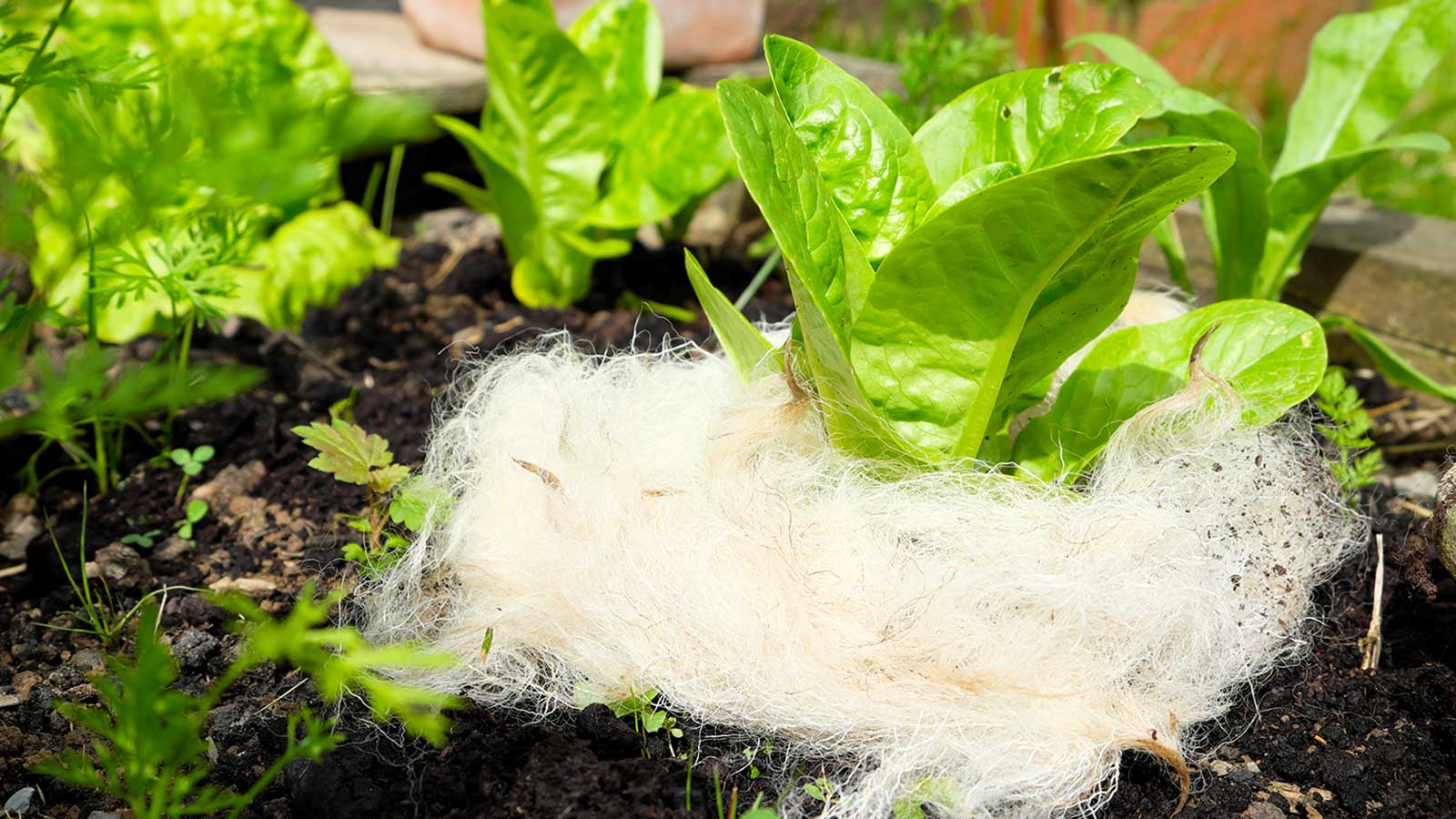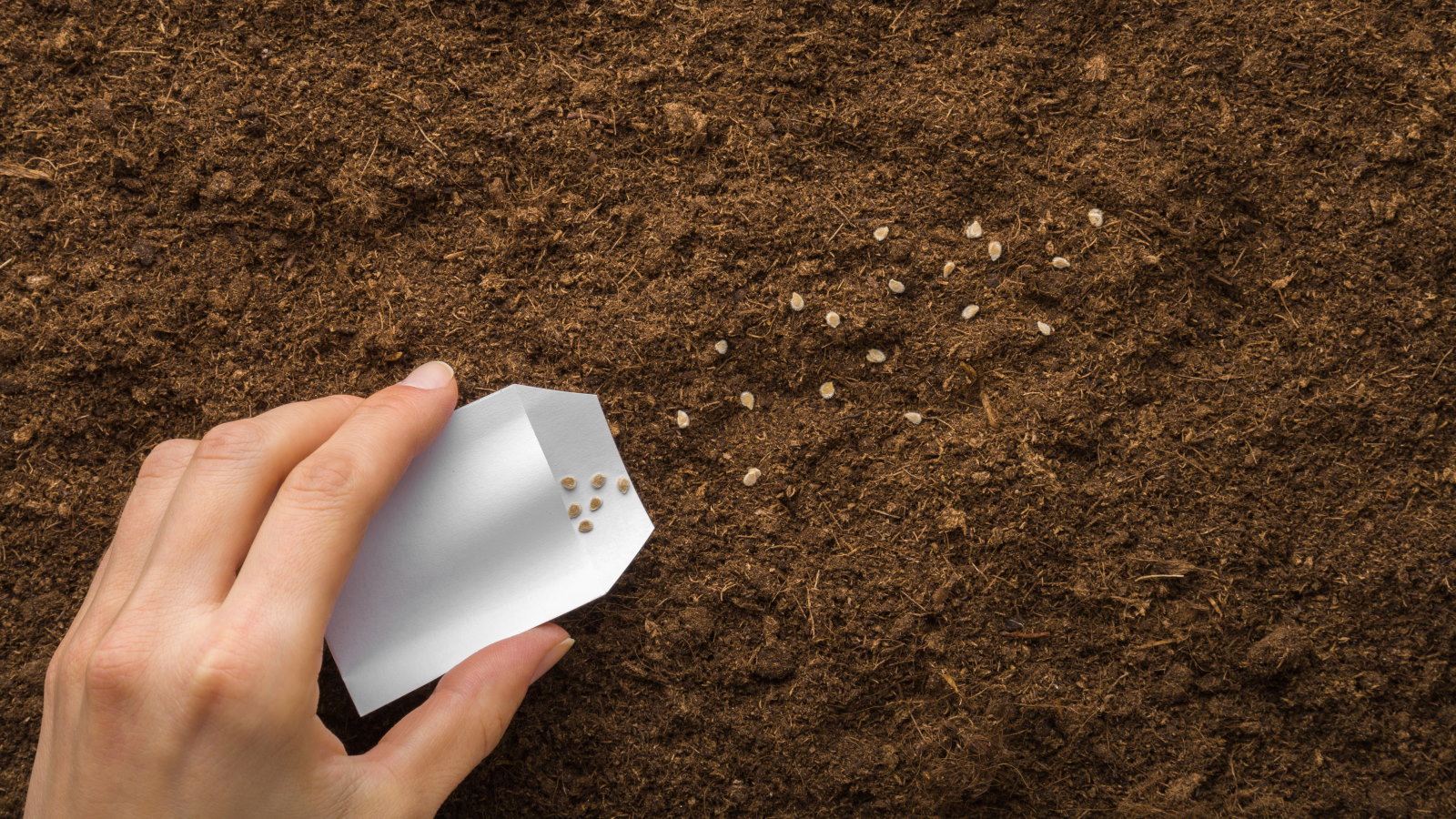
Using sheep wool in the garden might sound like a strange idea at first, but it's a versatile material with tons of benefits for your plants. These include improving soil's moisture retention, as well as keeping weeds and certain pests at bay – which, for you, can mean less time spent on maintenance. Wool is also great for a more eco-friendly garden .
As Amy Enfield , senior horticulturist at ScottsMiracle-Gro, highlights, it’s a renewable resource, all-natural, and biodegradable. 'It can be used right off the sheep or processed into other forms, like pellets,' she adds. Below, you'll find five ways to use wool in your garden for healthy, happy plants.

There's also info on the drawbacks, which are helpful to keep in mind for the best results. 1. Improving moisture retention in soil Work wool into your potting soil mix Are you tired of constantly watering your plants ? Horticultural wool can help.
As Amy explains, it acts like a sponge when added to soil, holding many times its weight in water and releasing it slowly as the surrounding soil dries. She particularly recommends mixing it with a quality potting soil, such as Miracle-Gro OrganicTM Outdoor Potting Mix (available from Amazon ), for your container garden plants . This will help increase the amount of water the soil can hold, she says, 'making it a great way to both conserve water and provide water to your plants longer by releasing the moisture as the plants need it.
' Amy has 30 years of experience in the lawn and garden industry and has been with ScottsMiracle-Gro for 12 years. She has a BS and MS in Horticulture from Michigan State University and a PhD in Plant and Environmental Sciences from Clemson University. Enjoy the many benefits of wool in your garden with these well-rated pellets.
There are three sizes of bags to choose from, to suit your needs. 2. Deterring pests Wool can act as a barrier, helping prevent plant damage from slugs and snails Horticultural wool can also be effective at getting rid of slugs and snails .
As Amy explains, whether the raw fleece is applied like a mulch or wool pellets are crushed into smaller pieces and scattered around your plants, it acts as a barrier. 'Slugs find the rough texture of the wool irritating, and they are unable to move across its surface,' she says. 'That means less damage to your plants.
' 3. Mulching plants A layer of wool on the soil's surface will act as a natural mulch You can also use it to mulch your plants, which will help tackle weeds . As Amy explains, 'a layer of horticultural wool over the soil prevents sunlight from reaching the soil surface, which means weed seeds are not able to sprout.
' It will also assist in regulating the temperature of the soil and keeping it more consistent, Amy highlights, adding how this reduces plant stress, especially during the hot summer months. Nastya Vasylchyshyna , a resident botany expert at Plantum, also notes how it can serve as a natural insulator against sudden cold snaps. She points out that it reduces soil erosion, too.
Nastya is a professional botany expert for the Plantum app that helps identify plants and plant diseases and provides care recommendations. Her specialization is plant morphology, phytopathology, and plant physiology. 4.
Starting seeds Try adding wool to your seed-starting mix Wool can be beneficial when starting seeds indoors , too. As you may already know, it's important to keep the growing medium in seed-starting trays moist to encourage germination. And, according to Amy, you can use wool to create a capillary mat to help with this.
You could also consider adding wool pellets to your seed-starting mix for soil blocks – an eco-friendly way to start seeds without using plastic . 5. Amending soil Wool releases nutrients into the soil as it breaks down As well as homemade compost , comfrey tea , and leaf mold , wool is a natural and eco-friendly way to feed your plants.
Amy says, 'Like other organic fertilizers, as the soil microorganisms gradually break down the wool over time, nutrients, such as nitrogen and potassium, are released into the soil making them available for plants to use.' It can also improve the soil's structure, she adds. However, Amy points out that while it is biodegradable, for some gardeners it may break down too slowly.
'It can take a year or more for horticultural wool to break down and release nutrients.' The downsides to using wool in the garden 'Horticultural wool doesn’t provide nutrients immediately to your plants, so it shouldn’t be relied upon as a primary source of nutrients,' says Amy. She also notes how it it can form a dense, water-resistant mat as it starts to decompose, which can limit water movement into the soil.
'Its moisture retention properties may be “too much of a good thing”,' she continues. 'If your garden contains a lot of plants that are prone to rotting when the soil stays constantly damp (like a succulent garden), adding horticultural wool is probably not a good idea. 'Cost and availability can also be factors, as horticultural wool isn’t as widely available as traditional gardening products,' Amy adds.
Then there's the aesthetics to think about: Nastya points out how it's less attractive compared to bark, straw, pebbles, or even leaves. 'But, you can easily overcome this by covering the wool with a thin layer of decorative material.' It can also obstruct the sun and slow soil warming in early spring , she says.
'To speed up the process, just remove last year’s wool. 'If the wool eventually becomes a nuisance in the garden, you can always collect it and add it to the compost pile,' Nastya adds. FAQs Amy notes that wool tends to be naturally alkaline, meaning acid-loving plants like rhododendrons and blueberries may be adversely affected if it is used near them.
In other words, it's best avoided. The importance of applying more sustainable methods in our gardening is not to be overlooked, and it's often easier – and more affordable – than we might expect. Besides using wool, there are lots of other ideas to try.
Our guides on plastic alternatives , making a rain barrel , or using kitchen waste in the garden will provide more inspiration..















